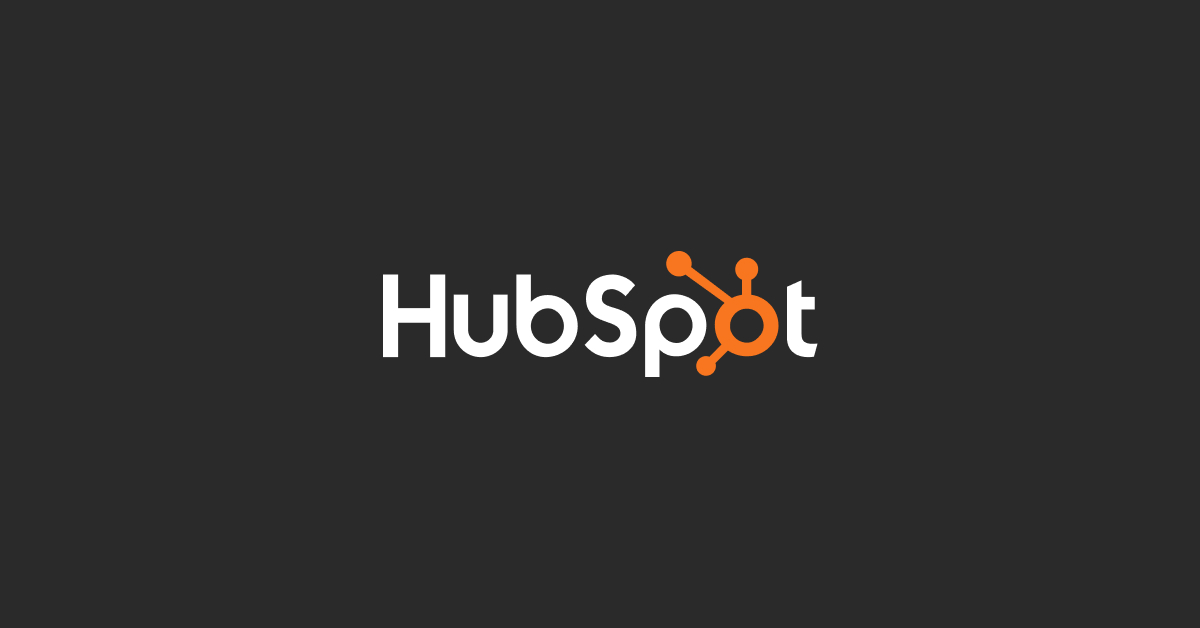HubSpot Integrations: A Comprehensive Guide
Introduction
HubSpot is one of the most popular CRM platforms available today, offering robust tools for marketing, sales, customer service, and content management. However, the true power of HubSpot lies in its ability to integrate seamlessly with a wide array of third-party applications and services. Whether you're looking to enhance your marketing automation, streamline your sales processes, or manage customer data more effectively, HubSpot integrations can help you achieve your goals.
In this guide, we'll explore everything you need to know about HubSpot integrations, from connecting your apps to the platform to leveraging custom integrations for more complex needs. We'll also highlight some of the most popular integrations and provide tips for making the most of HubSpot's integration capabilities.
1. Understanding HubSpot Integrations
What Are HubSpot Integrations?
HubSpot integrations are connections between HubSpot and other software applications that enable the two platforms to share data and functionality. These integrations can range from simple data syncs to complex workflows that automate tasks across multiple systems.
Integrations allow businesses to:
- Streamline Operations: By connecting HubSpot with other tools, you can automate workflows, reduce manual data entry, and ensure that all your systems are in sync.
- Enhance Customer Insights: Integrations enable you to gather data from multiple sources, providing a more comprehensive view of your customers.
- Improve Marketing and Sales Efficiency: With the right integrations, you can automate marketing campaigns, track customer interactions, and optimize your sales processes.
Types of HubSpot Integrations
- Native Integrations: These are pre-built integrations available in the HubSpot App Marketplace. They are developed and maintained either by HubSpot or by third-party developers and are easy to install and configure.
- Custom Integrations: For more complex needs, businesses can develop custom integrations using HubSpot's open APIs. These integrations are tailored to specific use cases and can connect HubSpot with virtually any other platform.
2. The HubSpot App Marketplace
What is the HubSpot App Marketplace?
The HubSpot App Marketplace is a central hub where you can find, connect, and manage various third-party applications that integrate with HubSpot. With over 1,000 integrations available, the marketplace offers a wide range of tools to enhance your HubSpot experience, from email marketing platforms to e-commerce solutions.
How to Find and Install Apps:
- Accessing the Marketplace: Navigate to the App Marketplace from your HubSpot account by clicking on the Marketplace icon in the top navigation bar.
- Searching for Apps: You can search for specific apps by name or browse through categories based on your business needs. The marketplace also offers curated collections to help you find the best tools for your industry.
- Reviewing App Details: Each app listing provides detailed information, including an overview of the app's features, pricing, installation requirements, and data privacy information.
- Installing an App: Once you've found an app that meets your needs, click the "Install app" button and follow the prompts to connect it to your HubSpot account.
3. Popular HubSpot Integrations
1. HubSpot and Zapier
Zapier is a powerful automation tool that allows you to connect HubSpot with over 3,000 other apps without any coding. With Zapier, you can create "Zaps," or automated workflows, that perform specific actions based on triggers in HubSpot or another app.
Example Use Cases:
- Custom Integrations: For more complex needs, businesses can develop custom integrations using HubSpot's open APIs. These integrations are tailored to specific use cases and can connect HubSpot with virtually any other platform.
- Lead Management: Automatically add new HubSpot contacts to a Google Sheets spreadsheet for tracking.
- Marketing Automation: Trigger a Mailchimp email campaign whenever a new contact is added to HubSpot.
- CRM Updates: Sync HubSpot with other CRMs, such as Salesforce, to keep your customer data up to date across platforms.
2. HubSpot and Salesforce
Salesforce is one of the most widely used CRM platforms in the world, and integrating it with HubSpot allows you to align your sales and marketing efforts. The HubSpot-Salesforce integration enables seamless data syncs, ensuring that your sales team always has access to the latest lead and customer information.
Key Benefits:
-
Bidirectional Data Sync: Keep contact, company, and deal information up to date across both platforms.
- Marketing and Sales Alignment: Share lead intelligence from HubSpot with your sales team in Salesforce to improve conversion rates.
- Automated Workflows: Use HubSpot's automation tools to trigger Salesforce tasks and workflows based on HubSpot activity.
3. HubSpot and Slack
Slack is a popular communication platform used by teams to collaborate in real-time. Integrating HubSpot with Slack can help your team stay informed about important activities and updates without leaving their chat environment.
Key Features:
- Real-Time Notifications: Receive instant notifications in Slack whenever a contact is created, a deal is closed, or a task is completed in HubSpot.
- Task Management: Create and manage HubSpot tasks directly from Slack, ensuring that your team stays on top of their responsibilities.
- Automated Alerts: Set up custom alerts in Slack for key HubSpot events, such as when a lead reaches a certain lifecycle stage.
4. Custom HubSpot Integrations
What Are Custom Integrations?
Custom integrations are bespoke connections between HubSpot and other platforms that are developed specifically for a business's unique needs. These integrations are typically built using HubSpot's APIs and can be as simple or complex as required.
When to Consider a Custom Integration:
- Unique Business Processes: If your business has specific workflows that aren't supported by existing integrations, a custom solution may be necessary.
- Proprietary Systems: If you use homegrown software or legacy systems, a custom integration can connect these platforms with HubSpot.
- Enhanced Functionality: Custom integrations allow you to extend HubSpot's capabilities, such as creating custom reports, syncing data with non-standard systems, or automating complex workflows.
How to Develop a Custom Integration
- Identify Your Needs: Start by determining what data needs to be synced between HubSpot and the other platform, and how you want the integration to function.
- Use HubSpot APIs: HubSpot provides a robust set of APIs that allow you to access and manipulate data within your account. You'll need a developer with experience in API integration to build the custom solution.
- Test and Deploy: Thoroughly test the integration in a staging environment before deploying it to production. This will help you catch any issues and ensure that the integration works as expected.
5. HubSpot Integration Best Practices
1. Plan Your Integration Strategy
Before connecting any apps to HubSpot, it's essential to have a clear plan in place. Consider the following questions:
- What are your goals? Determine what you want to achieve with the integration, whether it's improving data accuracy, automating processes, or enhancing customer insights.
- Which tools do you need? Identify the tools that are essential to your business operations and look for compatible integrations in the HubSpot App Marketplace.
- How will the integration affect your team? Consider how the integration will impact your team's workflows and ensure that they are trained on any new processes.
2. Keep Data Consistent
Data consistency is crucial for ensuring that your systems work together smoothly. Make sure that the data being synced between HubSpot and other platforms is accurate and up to date. Use field mapping to align data fields across platforms and avoid duplicate records.
3. Monitor and Optimize Integrations
Once your integrations are in place, it's essential to monitor their performance regularly. Check for any sync errors or data discrepancies, and address them promptly. Additionally, look for opportunities to optimize your integrations by adding new features or automating additional tasks.
6. The Future of HubSpot Integrations
Emerging Trends
As technology continues to evolve, so too do the possibilities for HubSpot integrations. Some emerging trends to watch include:
- AI and Machine Learning: Integrations that leverage AI and machine learning can help businesses analyze customer data more effectively, automate decision-making processes, and deliver personalized experiences.
- IoT Integrations: The Internet of Things (IoT) is opening up new opportunities for businesses to connect physical devices with their digital platforms. HubSpot integrations with IoT devices could enable more advanced customer tracking, automated maintenance alerts, and more.
- Blockchain and Data Security: As data security becomes increasingly important, integrations that leverage blockchain technology could help businesses ensure the integrity and security of their customer data.
Preparing for the Future
To stay ahead of the curve, businesses should:
- Stay Informed: Keep up with the latest developments in technology and look for new integration opportunities that can benefit your business.
- Invest in Training: Ensure that your team is trained on the latest tools and technologies, so they can make the most of your HubSpot integrations.
- Be Agile: As new tools and technologies emerge, be ready to adapt your integration strategy to take advantage of the latest advancements.
Conclusion
HubSpot integrations are a powerful way to extend the functionality of the platform and enhance your business operations. Whether you're using pre-built integrations from the HubSpot App Marketplace or developing custom solutions, the possibilities are virtually limitless.
By following the best practices outlined in this guide and staying informed about emerging trends, you can maximize the value of your HubSpot integrations and stay ahead of the competition.
This guide has covered the essentials of HubSpot integrations, from finding and installing apps to developing custom solutions and planning for the future. By leveraging these integrations, you can create a more connected, efficient, and data-driven business.
If you have any specific questions or need further guidance on HubSpot integrations, feel free to reach out or explore additional resources provided by HubSpot and its partners.




